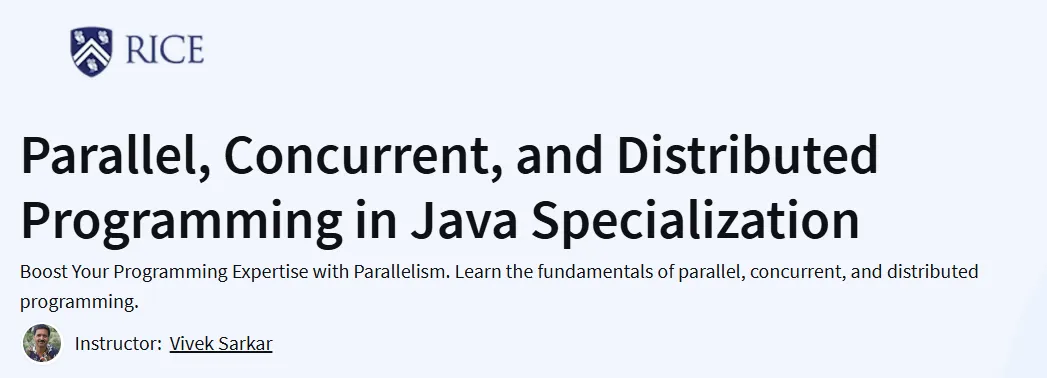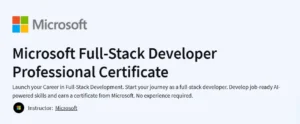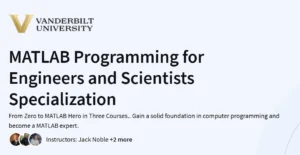What will you learn in this Parallel, Concurrent, and Distributed Programming in Java Specialization Course
Understand the fundamentals of parallel, concurrent, and distributed programming in Java.
Implement parallel algorithms using Java’s ForkJoin framework and Streams API.
Manage concurrency with threads, locks, and synchronization techniques.
Develop distributed applications using sockets and remote method invocation (RMI).
Apply theoretical concepts such as Amdahl’s Law, deadlocks, and data races to real-world scenarios.
Program Overview
1. Parallel Programming in Java
⏳ 19 hours
Learn to write parallel programs using Java 8 frameworks like ForkJoin and Streams. Topics include computation graphs, parallel speedup, and data races.
2. Concurrent Programming in Java
⏳ 18 hours
Explore concurrency constructs in Java, including threads, locks, atomic variables, and concurrent collections. Understand concepts like deadlocks and livelocks.
3. Distributed Programming in Java
⏳ 16 hours
Delve into distributed systems by implementing networked applications using sockets and RMI. Study topics like message passing and fault tolerance.
Get certificate
Job Outlook
Equips learners for roles such as Software Engineer, Systems Programmer, and Backend Developer.
Applicable in industries like finance, healthcare, and cloud computing.
Enhances employability by teaching practical skills in multithreading and distributed systems.
Supports career advancement in high-performance and scalable application development.
Specification: Parallel, Concurrent, and Distributed Programming in Java Specialization
|
FAQs
- No advanced math is required beyond basic algebra and logic.
- Focus is more on algorithms, synchronization, and programming concepts.
- Amdahl’s Law and performance formulas are taught at a practical level.
- Understanding of data structures is more important than calculus.
- The course emphasizes coding, not mathematical proofs.
- Structured progression from basics to advanced distributed systems.
- Includes hands-on projects to practice real-world scenarios.
- Covers both concurrency and distributed computing, not just threads.
- Provides guidance from Rice University instructors.
- Certificate adds credibility compared to self-study.
- Concepts like deadlocks, data races, and parallelism are universal.
- Experience with synchronization applies to any language.
- Learning design patterns for concurrency helps in C++, C#, and Go.
- Java tools (ForkJoin, Streams) are specific, but ideas carry over.
- Builds a strong base for cloud-native and distributed computing.
- Helps secure backend developer or systems programmer roles.
- Valuable for high-performance computing and fintech industries.
- Supports cloud application and microservices development.
- Employers value parallel programming expertise for scalable apps.
- Adds niche specialization often missing in general Java training.
- Requires breaking tasks into smaller independent units.
- Debugging concurrency issues can be more challenging.
- Concepts like locks, race conditions, and atomicity take practice.
- Once mastered, it improves problem-solving in all coding domains.
- Real projects in the course help ease the transition.





